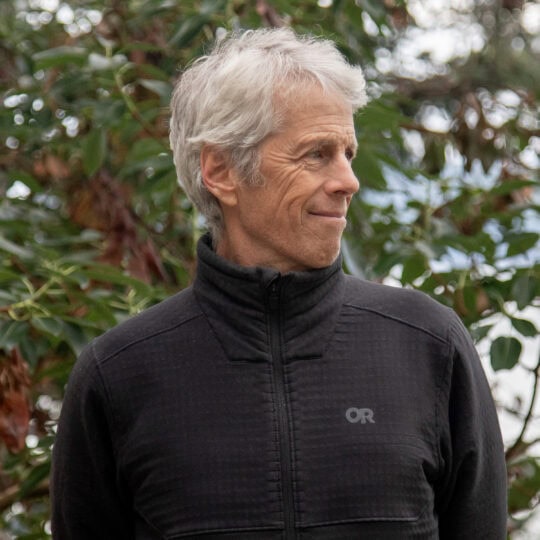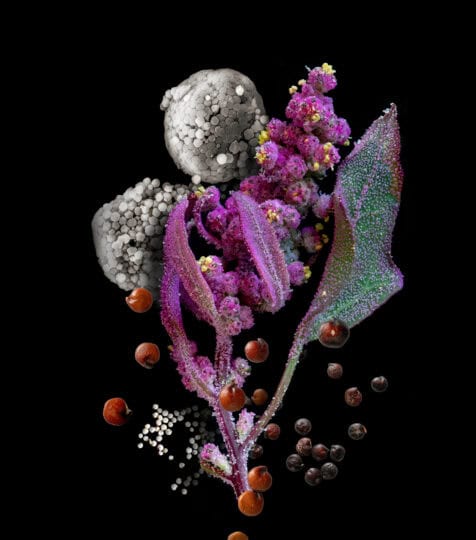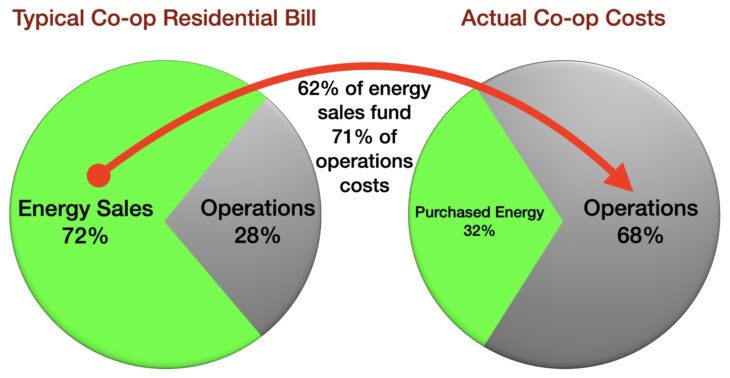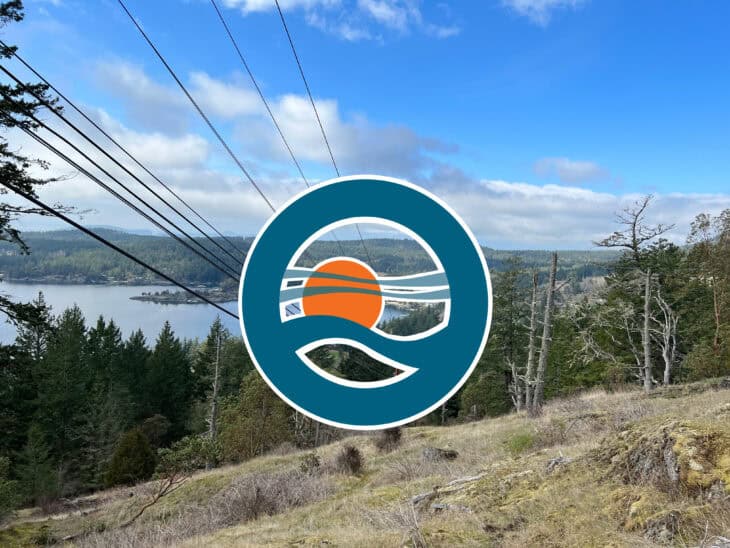Providing a Different Perspective
Local author and co-op member uses art to explore agriculture and climate change in his latest book

Robert Dash is an OPALCO member, educator, and self-taught photographer who lives in Deer Harbor on Orcas Island. Robert moved to Orcas Island in 2012 as a teacher at the Orcas Island School District’s OASIS Program. He won two Nautilus Book Awards for his first book entitled On an Acre Shy of Eternity/Micro Landscapes at the Edge, which was a three-year study of the land where he resides with his partner, artist Ranna McNeil. His latest book is Food Planet Future: The Art of Turning Food and Climate Perils into Possibilities (Papadakis, 2024).
The journey towards putting out his latest book started with an investigation of the tiny and the large. Robert made 100 trips to the scanning electron microscope at the Friday Harbor Labs to explore the environment around him, at the up-close, personal, and microscopic levels. He followed his curiosity towards the plants that filled him with awe and wonder, inspiring him to go deeper.
Dash’s newest book is a culmination of the resulting beautiful art and stories that inspire. He realized that these stories of positive food practices that are also healing towards the planet could offer a different perspective on climate change. “We all get the doom and gloom stories of global warming, but I wanted to share something more playful, full of curiosity, artistic, and educational,” said Robert about his book. Our future is our responsibility, and Robert aids in that responsibility by showcasing different practices that people and communities are already utilizing – ones that can teach us how to continue on and thrive in this warming planet.
Food Planet Future combines his life work and interests – art, science, photography, conservation, biodiversity, food, and agriculture. Flipping through the pages you can find stories about a wide variety of foods from all over the world, though many can be found right here in the San Juan Islands. One example in this book is the food crop flax, with its various uses outlined by Dash, including why it is a beneficial crop in modern times. The stories are all accompanied by beautiful photographs made up of micro and macro images. There is also a page about the benefits of “agrisolar” which pairs traditional farming practices with renewable energy generation. There are over 80 topics explored in the book each paired with beautiful photographs – most taken by Dash.
Robert’s favorite plant from his book (at least on the day we asked him about it):

“The quinoa image has many layers of fascination for me. When I first saw the inside of a quinoa seed with the microscope, I was absolutely stunned by the starch granules, which look almost like soccer balls. And then the leaf itself has these phenomenal trichome structures that are so gorgeous and surprising, and you’d never know about them if you didn’t look closely. Additional backstory is that Rwandan researcher Dr. Cedric Habiyaremye came to the Northwestern Washington Research and Extension Center in Mount Vernon; as a child he had been in refugee camps where he nearly starved. He earned his Ph.D. at the research station where I collected and photographed quinoa grown there. He brought the same quinoa variety back to Rwanda and introduced it to farmers all over East Africa, offering a high-protein, resilient crop capable of flourishing in difficult conditions. Things like that are mind blowing. Not just the absolute beauty of what we’re looking at, but also the human consequences of studying and sharing that kind of valuable food.”
You can purchase Robert’s book on his website at www.foodplanetfuture.com or locally at Darvill’s Bookstore on Orcas Island or at the San Juan Islands Museum of Art. You can also find information about Robert’s traveling exhibition with 36 of his images blown up at https://www.robertdashphotography.com/.



